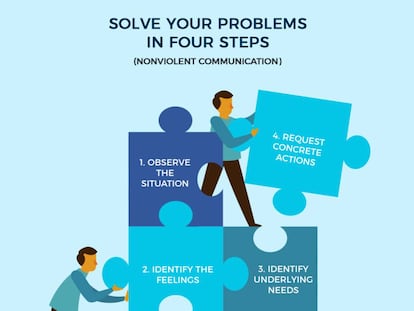The benefits of having a workplace that waves the LGBTQ flag with pride
Attracting talent, driving innovation and properly focusing on customers are all affected by a company’s policies on diversity and inclusion

If you want people to be engaged with what they do, let them be themselves. Diversity isn’t just a fashion, or something to boast about on your website in a bid to appear modern. No, diversity and inclusion get results in the workplace, and good ones too. When an organization ensures that all of its professionals feel important and included – independently of their differences – there are three benefits to be had: more innovation (how can creativity be generated if we all think the same way?); customers feel better represented (would you buy from a company that discriminated against someone who is like you?); and finally, workers are prepared to put all of their talents into practice without fear of being criticized.
Innovation, an improvement on customer focus, and greater commitment are the three most “businesslike” reasons that should convince all boards of directors to take a step toward inclusion. As such, there are companies that, beyond gender or age diversity, are leading another kind: that of the LGBTQ community. Some of these companies in Spain have started the REDI association – The Business Network for the Diversity and Inclusion of the LGBTQ community – which made its debut on July 4 this year. Let’s take a look at the four policies these companies have put into action:
Inclusion has to be part of a company’s values and be translated into a concrete strategy
Firstly, inclusion has to be part of a company’s values and be translated into a concrete strategy. “At AXA I can be MYSELF,” reads the slogan of the insurance company in Spain. Only in this way can we “feel at ease and express ourselves just as we are, to attract and retain the talent that we need,” explains Carmen Corbatón, the company’s head of diversity. This vision needs a strategy to back it up, accompanied by diagnostics and actions that allow for a respectful and inclusive environment. This is the approach also taken by Bill McDermott, the chief executive of SAP, who wants his firm to become the most open-minded and inclusive software company in the world, and whose strategy falls to Miguel Castro, the global head of culture and identity.
Secondly, it is necessary to create a network of professionals within that same company who help to drive LGBTQ diversity. For many people who have opted to keep silent, this means taking a step forward. But change will only come about if there are other reference points that can be used as examples. P&G created a network for the LGBTQ group that helps with awareness campaigns. Another network, known as partners, recruits heterosexuals to voluntarily contribute to the cause, and commit to detecting any kind of non-inclusive behavior and fomenting an environment of trust. These networks are a success, according to Manuel Alejandre, the head of human resources at P&G, given that “more than 85% of our employees identify themselves as allies in LGBTQ inclusion.”
Thirdly, awareness and communication campaigns need to be launched – both internally and externally. A lot of the time we are not inclusive with other people because we have blind spots or unconscious bias. Depending on how bosses and colleagues are trained with regard to more inclusive leadership, or a more open attitude, advances can be made much faster. This is what SAP and Vodafone do with their training programs, or via the adaptation of their bathrooms to neutral gender. On Gay Pride day, for example, AXA lights up its building with the colors of the rainbow flag in a sign of its commitment.
Fourthly, there is a need for more specific actions in each collective from the LGBTQ community. A very diverse variety of people are grouped under that acronym, each with their own needs. One of these is the lesbian collective. Marta Fernández, the founder of LesWorking, opts for training programs to empower these women and work toward having a greater presence within companies.
Inclusion is a must for companies if they want talent, innovation and better customer focus. As Miren Garay, the head of Global Projects at Sodexo, and the leader of the LGTBQ network at Sodexo Iberia, says: “Thinking that there are no problems in your company in this area is a mistake, you’re just avoiding dealing with it.” As such, the more that this approach becomes a strategy, and the necessary actions are taken, the company will not only achieve results, but will also manage something much more important: becoming an engine for social change.
English version by John Clarke
Tu suscripción se está usando en otro dispositivo
¿Quieres añadir otro usuario a tu suscripción?
Si continúas leyendo en este dispositivo, no se podrá leer en el otro.
FlechaTu suscripción se está usando en otro dispositivo y solo puedes acceder a EL PAÍS desde un dispositivo a la vez.
Si quieres compartir tu cuenta, cambia tu suscripción a la modalidad Premium, así podrás añadir otro usuario. Cada uno accederá con su propia cuenta de email, lo que os permitirá personalizar vuestra experiencia en EL PAÍS.
¿Tienes una suscripción de empresa? Accede aquí para contratar más cuentas.
En el caso de no saber quién está usando tu cuenta, te recomendamos cambiar tu contraseña aquí.
Si decides continuar compartiendo tu cuenta, este mensaje se mostrará en tu dispositivo y en el de la otra persona que está usando tu cuenta de forma indefinida, afectando a tu experiencia de lectura. Puedes consultar aquí los términos y condiciones de la suscripción digital.
More information
Archived In
Últimas noticias
The new victims of the Republican war on Obamacare: Millions hit by soaring health insurance premiums
A country divided on migrant rights: Some US states expand protections while others restrict them
Venezuela authorizes the release of another 87 political prisoners
There is as much life left to discover on planet Earth as that which is already known
Most viewed
- David King, chemist: ‘There are scientists studying how to cool the planet; nobody should stop these experiments from happening’
- Reinhard Genzel, Nobel laureate in physics: ‘One-minute videos will never give you the truth’
- Oona Chaplin: ‘I told James Cameron that I was living in a treehouse and starting a permaculture project with a friend’
- Sinaloa Cartel war is taking its toll on Los Chapitos
- The Interoceanic Train, the Mexican alternative to the Panama Canal










































